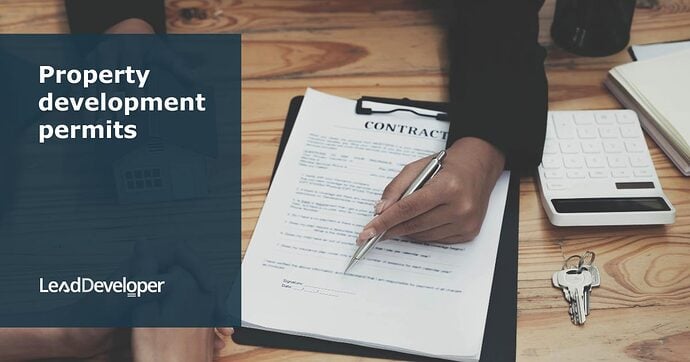Permits
Here is a concise guide on various permits required for property development projects. It outlines the responsibilities of property owners and builders in securing demolition, asset protection, building, and crossover permits, among others, emphasising compliance with local regulations.
Demolition permit
It can be arranged by you, the builder, or the demolition company.
Asset protection permit
Usually arranged by the builder.
Building permit
Typically your responsibility to start construction.
Crossover permit
Needed for driveway work, often handled by the builder.
LPD & PIC number
In Victoria, it is applied for by the builder.
Mandatory inspections
Must be arranged; additional inspections may be required by the council.
Frequently Asked Questions
How do the requirements for a demolition permit vary by location?
A demolition permit can be arranged by the property owner, a builder, or directly through a demolition company. While it highlights the flexibility in who can arrange the permit, it doesn’t delve into location-specific requirements.
Such details often depend on local regulations and codes, which can vary significantly from one area to another. It emphasises the importance of consulting with local authorities or professionals to ensure compliance with all applicable laws and regulations for your specific location.
What steps are involved in obtaining a building permit?
The property owner should actively engage in the process to ensure that all requirements are met for construction to start.
While it does not detail every step, the implication is that understanding and compiling the necessary documentation, plans, and approvals form the core of this process.
The emphasis is on the preparatory work required to prepare a project for construction, suggesting a focus on thorough planning and compliance with local building codes and regulations.
How does the process for mandatory inspections integrate with overall project timelines?
These inspections are crucial for compliance and must be scheduled by the property owner or developer. However, it doesn’t delve into the specific integration of these inspections within the overall project timelines.
The mention of mandatory inspections suggests that they are a critical checkpoint in the development process, ensuring that the project adheres to local building codes and regulations.
The implication is that these inspections should be anticipated and planned for within the project’s schedule. Still, the exact timing and coordination with other project phases are not detailed, underscoring the importance of proactive planning and coordination with relevant authorities.
What is a demolition permit, and who is responsible for arranging it?
A demolition permit is required to legally dismantle or demolish a structure on a property. This permit ensures that the demolition process is conducted safely and in accordance with local regulations. The responsibility for obtaining a demolition permit can fall on the property owner, the builder, or the demolition company involved in the project. It is essential to determine who will handle this task early in the planning process to avoid delays.
What does an asset protection permit entail, and who usually arranges it?
An asset protection permit is necessary to protect public assets and infrastructure from potential damage during construction or demolition work on a property. This includes sidewalks, roads, and utilities. Typically, the builder in charge of the project arranges for this permit to ensure that any damage to public assets is minimized and, if occurred, properly repaired.
Why is a building permit important, and whose responsibility is it to obtain it?
A building permit is crucial because it grants legal permission to start construction on a property. This permit ensures that the planned construction complies with building codes, zoning laws, and other regulations. It is usually the property owner’s responsibility to obtain a building permit, emphasizing the owner’s role in ensuring the project meets all legal requirements before commencement.
What is a crossover permit, and when is it needed?
A crossover permit is required when modifications or work need to be done on a driveway that crosses over from private property to public land. This type of permit is often necessary for driveway construction or renovation projects to ensure that the work does not negatively impact public pathways or infrastructure. Builders typically handle the arrangement of a crossover permit as part of the construction process.
What are LPD and PIC numbers, and who applies for them in Victoria?
In Victoria, LPD (Licensed Plumbing Drainer) and PIC (Plumbing Industry Commission) numbers are unique identifiers used in the plumbing industry. These numbers are required for certain types of plumbing work and are applied for by the builder overseeing the project. They ensure that the plumbing work is performed by licensed professionals and meets local standards and regulations.
What are mandatory inspections, and are additional inspections sometimes required?
Mandatory inspections are critical checkpoints during the construction or demolition process, where a building inspector assesses the work to ensure it complies with the building permit and local regulations. While these inspections are required, additional inspections may also be mandated by the council to address specific concerns or to ensure compliance with updated standards. It’s important to arrange for these inspections as needed to maintain the legality and safety of the project.
Test Your Knowledge
Multiple-Choice Questions on Property Development Permits
1. Who is responsible for arranging a demolition permit for a property development project?
A) The local council
B) The property owner, builder, or demolition company
C) Only the property owner
D) Only the demolition company
2. What is the primary purpose of an asset protection permit in property development?
A) To ensure the construction meets design specifications
B) To protect public assets and infrastructure from damage during construction
C) To guarantee the safety of the construction workers
D) To provide insurance coverage for the property
3. Which of the following best describes the responsibility for obtaining a building permit?
A) The local council automatically issues it once construction plans are submitted.
B) It is the builder’s responsibility to ensure it is obtained before starting construction.
C) It is typically the property owner’s responsibility to obtain before starting construction.
D) The demolition company must secure it before demolition work begins.
4. When is a crossover permit required, and who usually arranges for it?
A) For any construction work on the property, arranged by the property owner
B) For installing utilities, arranged by the utility companies
C) For driveway work that involves public land, often arranged by the builder
D) Only when constructing new buildings, arranged by the architect
5. In the context of property development in Victoria, who applies for LPD and PIC numbers?
A) The local council
B) The property owner
C) The builder
D) The demolition company
6. What are mandatory inspections in the context of property development, and who might require additional inspections?
A) Inspections by the builder to check for quality of work, with no additional inspections required
B) Checkpoints by the property owner to assess progress, sometimes requiring additional checks by the builder
C) Critical assessments by a building inspector to ensure compliance, with the council possibly requiring more
D) Routine check-ups by the demolition company, with additional inspections mandated by insurance companies
Answers:
- B) The property owner, builder, or demolition company
- B) To protect public assets and infrastructure from damage during construction
- C) It is typically the property owner’s responsibility to obtain before starting construction.
- C) For driveway work that involves public land, often arranged by the builder
- C) The builder
- C) Critical assessments by a building inspector to ensure compliance, with the council possibly requiring more
Assignment
Practical Exercise on Understanding Property Development Permits
Objective:
This assignment is designed to enhance your understanding of the various permits required for property development projects, focusing on responsibilities for securing these permits and the importance of compliance with local regulations.
Instructions:
Complete the following tasks based on the guide provided on permits for property development. This will involve researching, critical thinking, and application of the concepts discussed. Provide detailed responses and explanations for each task.
Tasks:
Research Task:
Investigate the specific requirements for obtaining a demolition permit in your local area. Identify the documents needed, the associated costs, and the typical processing time. Summarize your findings in a brief report.
Case Study Analysis:
Imagine you are planning to develop a property that involves demolishing an existing structure, building a new residential home, and constructing a new driveway that crosses over to the public sidewalk. Create a step-by-step plan detailing:
- The sequence of permits you would need to obtain.
- Who would be responsible for obtaining each permit based on the roles outlined (property owner, builder, etc.).
- Any potential challenges you might face in securing these permits and how you would address them.
To Do:
- Contact your local council or research online to find out more about asset protection permits:
- What are the specific conditions that trigger the requirement for an asset protection permit?
- Outline the process of applying for and securing an asset protection permit in your locality.
Research and Discussion:
- Explore the significance of LPD & PIC numbers for builders in Victoria or an equivalent system in your region if you are not based in Victoria. Discuss how these numbers contribute to maintaining standards within the construction industry.
Reflection:
Reflect on the importance of mandatory inspections during the construction process. Consider a scenario where these inspections were not conducted. Discuss the potential risks and consequences that might arise from such a scenario.
Local Regulations Compliance:
Research the consequences of non-compliance with local regulations when developing a property. Identify a real-world example where a developer or property owner faced penalties for failing to comply with permit requirements. Summarize the situation and the outcome.
Deliverables:
- A written report containing all the tasks above, clearly sectioned and labeled.
- For task 2 (Case Study Analysis), include a flowchart or diagram illustrating the permit acquisition process.
- Reflections and discussions should demonstrate critical thinking and understanding of the material provided.
Submission Guidelines:
- Submit your completed assignment as a single document.
- Ensure your work is well-organized, with each task clearly marked and answered comprehensively.
- Cite any external sources used in your research according to APA or MLA format.



